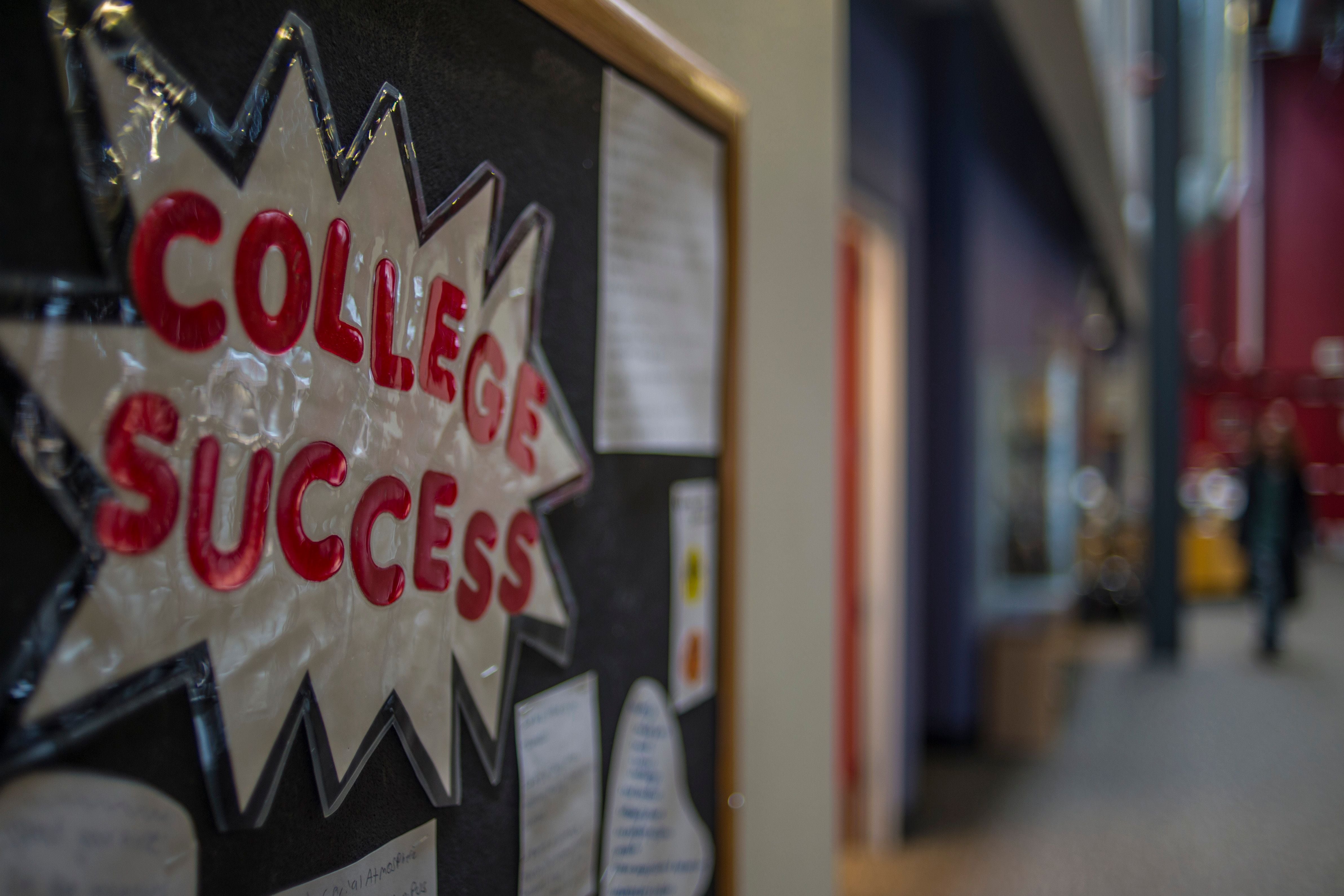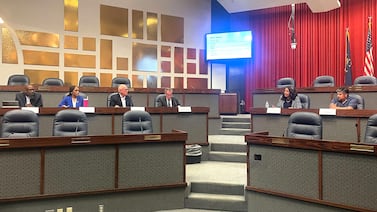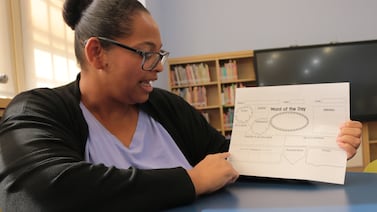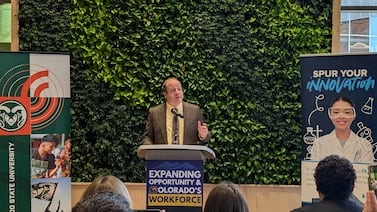Sign up for Chalkbeat Indiana’s free daily newsletter to keep up with Indianapolis Public Schools, Marion County’s township districts, and statewide education news.
When it comes to getting students to apply for college aid, Principal Jason Ridge thinks his school is ahead of the curve.
Two years ago, Indiana adopted a requirement for students to fill out the Free Application for Federal Student Aid, with some exceptions. The state set a goal for 60% of high school seniors to file the FAFSA by April 15, the deadline for preference for state aid — but in Blackford County, where Ridge leads Blackford Junior-Senior High School, 82% of students filed it.
Organizations such as Heavin College & Career Readiness Services and INvestEd provided significant help. They and school counselors were available to Blackford families throughout the school year to discuss the FAFSA process. And promoting broad awareness of the FAFSA requirement was also key, Ridge said, even though 70% of Blackford students ultimately don’t pursue higher education.
“If you’re going to get that many kids to complete it, you’re going to have to get buy-in from your superintendent. You’re going to have to get buy-in from classroom teachers. The best thing they did is they set it up as a graduation expectation that you’re going to get that done,” he said.
Blackford County is well above the statewide FAFSA completion average, but Indiana higher education officials are still celebrating the rise in FAFSA filings for the 2025-26 cycle.
The Indiana Commission for Higher Education, or CHE, reported that 55% of Hoosier seniors filed it before the state’s priority deadline of April 15, with 241 Indiana high schools exceeding the 60% statewide goal by that date. As of May 14, CHE’s dashboard showed 57.4% of students had filed it. And 68.6%of 21st Century Scholars — students who can receive free tuition at in-state public colleges and universities under certain conditions — had filed. Last year, as of mid-May, nearly 43% of all seniors had completed it.
“The completions we have achieved at this point in the cycle we typically wouldn’t even see at the end of June,” the commission said in a statement. “This year’s success has shown that achieving 60% overall by April 15 is possible.”
The federal deadline for this FAFSA cycle is June 30, 2026. As of May 23, Indiana ranked 11th for FAFSA completions nationwide. The commission and INvestEd, a free FAFSA assistance resource, credited a functioning form and continuous communication for the uptick. Unlike a year ago, the FAFSA hasn’t encountered a host of technical problems.
But higher education officials and advocates are tracking changes at the federal and state levels that could have an impact on financial aid, including President Donald Trump’s efforts to dismantle the U.S. Department of Education, which oversees the FAFSA.
CHE said “states and institutions are awaiting federal budget updates to be finalized before knowing how the Pell Grant, other federal grants, Federal Work Study and federal student loans will ultimately be impacted.”
Bill Wozniak, vice president of communications and student services at INvestEd, believes that there will eventually be clarity about the federal situation.
“Every year, there’s something. The only constant in financial aid is change,” Wozniak said.
At the state level, lawmakers cut operating budgets for CHE and public colleges by 5%. However, Indiana’s two largest need-based financial aid programs, 21st Century Scholars and the Frank O’Bannon Grant, were untouched by legislators.
CHE’s estimated allocation for fiscal 2026 Frank O’Bannon grants will be $175 million, down from the estimated $225 million for fiscal 2025. But the commission reported that the $175 million would still be higher than the amount awarded three years ago.
FAFSA form free of big glitches this year
Higher education officials said the 2025-2026 FAFSA cycle has progressed much smoother than last year’s.
For example, this year, the form was available in November instead of December, and current data was accessible on the agency’s dashboard and ScholarTrack, according to CHE. The state, colleges, and universities received student data quickly and with only “minimal glitches” unlike the previous year, the commission said.
Wozniak said the latest version of the form, which is supposed to be easier and faster to complete than the previous document, is meeting expectations.
“The form was working most days, and the things that over the last couple of years were put in place to make the form filing simpler now were working,” Wozniak said. “The processing is happening. The schools are getting the information. The state is getting the information from Washington, and we’re back to normal business.”
Even though Indiana’s first-come, first-served deadline of April 15 for state funds has passed, Wozniak said families will continue to file, and the number of completions will keep increasing until this cycle ends at the end of June next year.
“We’d like everybody to have it all done on April 15, but that’s never the case,” he said. “There are people on June 20 that say, ‘I’ve changed my mind. I’m going, and I’m going to file that FAFSA,’ because they were certain they weren’t going.”
Reach Chalkbeat Indiana at in.tips@chalkbeat.org






